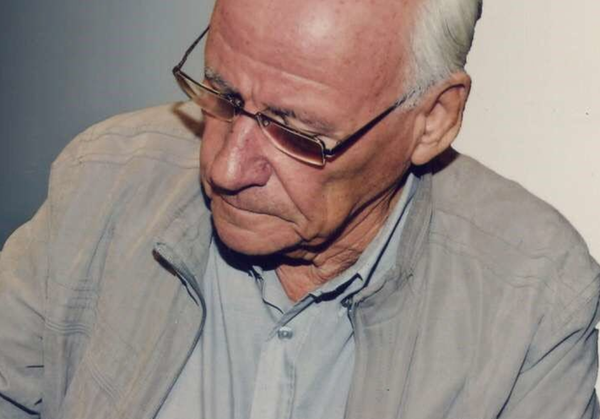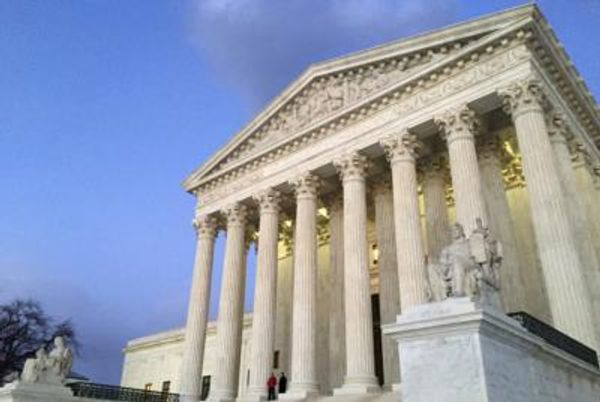
The hibiscus and the rose.
The rose represents Yinka Shonibare’s birthplace and current home of London. The rose is England’s national flower, long used to symbolize the nation.
The hibiscus represents Nigeria, his parents’ home country and the place of his childhood–Lagos, to be specific. Growing up, he would eat the nectar of the hibiscus flower, ubiquitous across the country.
Shoinbare (b. 1962) spoke Yoruba at home and English at the private school he attended. A “postcolonial hybrid” in his own words, the artist’s identity was shaped by his bicultural heritage growing up between the center and margin of the British Empire.
What better place to examine this duality–hibiscus and rose–than a botanical garden? A botanical garden with a prestigious sculpture park to boot–duality–the Frederik Meijer Gardens & Sculpture Park in Grand Rapids, MI.
After being closed for more than a year for renovations, the remodeled sculpture galleries at Frederik Meijer Gardens & Sculpture Park reopen with the exhibition “Yinka Shonibare CBE: Planets in My Head,” on view now through October 23, 2022. This exhibition presents works by Yinka Shonibare CBE (Commander of the Order of the British Empire) from the past three decades. Many of the works have never been shown in the United States, among them sculptures, paintings, photographs, collages, embroidery and film.
Appropriately, the exhibition includes a recent print of two flowers meaningful to Shonibare: Hibiscus and the Rose.

Shonibare has emerged as one of the leading artistic voices in the global art world best known for his playful combination of colorful Dutch wax-fabric patterns popular in West Africa with the fashion of upper-class Victorian culture. This imagery is owed to Shonibare’s long-standing interest in the age of Victorianism.
During the reign of Queen Victoria (1837-1901), the British Empire aggressively extended its colonial control around the world, especially on the African continent. Shonibare deals with the evils of Victorianism through parody and subversion. He has adopted as a metaphor the wax-dyed batik fabric that the Dutch were unable to market successfully in Indonesia and then began exporting to Africa. Batik stands in for the process of cultural transfer and displacement that contributed to fabricating an authentic African style.
Duality. Hybridity. Post-colonial hybrid.
While he embraces cross-cultural mixing and exchange in his work, he never shies from alluding to the postcolonial scars of cultural imperialism and exploitation.
A citizen of the world, Shonibare made sure his artwork on view in Grand Rapids also connects locally.
“Shonibare was inspired to create the sculpture Food Man specifically for this exhibition,” David Hooker, President & CEO of Frederik Meijer Gardens & Sculpture Park, who visited Shonibare in his London studio to extend an invitation to exhibit in Michigan, told Forbes.com. “Food Man is based on the artist’s research into the local West Michigan history of agriculture—especially the Fruit Ridge area, not far from Meijer Gardens, traditionally home to fruit orchards.”
Shonibare states: “Food Man questions the sustainability of industrialized food production, distribution system, and waste in the world where the population is reaching 7.8 billion. … Sustainability is expressed through this gravity-defying sculpture in which Food Man is struggling to keep the balance of supply.”
From Western Michigan to Nigeria, Meijer Gardens’ 158-acre main campus provides visitors with their own globetrotting experience.
“After visiting the Sculpture Galleries, guests can venture along the BISSELL Corridor into one of the conservatories to see and smell plant species from climates around the world. In the Earl & Donnalee Holton Victorian Garden Parlor, get a taste of the British 19th-century fashion for filling the interior of the home with plants,” Hooker suggests. “Through April, guests can experience the Lena Meijer Tropical Conservatory filled with thousands of butterflies, another species Victorians liked to collect and exhibit. The butterflies populating the Conservatory are shipped as pupa from South America, Asia and Africa. During this time, Meijer Gardens is literally a global meeting place for butterflies from around the world.”
Thinking big on a small scale

The Meijer Gardens Sculpture Park has established itself as one of the premiere institutions of its kind in the world. Its collection includes hundreds of sculptures from internationally acclaimed artists such as El Anatsui, Louise Bourgeois, Alexander Calder, Jaume Plensa, Richard Serra, Shonibare and Ai Weiwei. This occurred across a remarkably brief span of time.
In the early 1990s, Betsy Borre, a volunteer with the West Michigan Horticultural Society, determined to establish a botanic garden in Grand Rapids. She approached Fred Meijer, who turned his father’s small grocery store into a massive regional chain, asking for a lead gift.
“Fred was interested and had a conversation with his wife, Lena,” Hooker explains. “She talked about her love of gardens and flowers. He talked about his love of sculptures and that he had acquired some, with no place for display.”
Duality.
“Fred returned to Betsy with a proposition: If she and her group would accept and site his sculptures—and make the institution’s mission one of horticulture and sculpture—he and Lena would donate,” Hooker said.
The Meijers made a significant gift of money and land to get the organization started and the rest is history. A global arts and botanical destination created in less than 30 years time thanks to a bold vision, community-focused philanthropy and the gumption to ask. All in a city with a population of only about 200,000, isolated in western Michigan on the way to nowhere.
A new 69,000 square-foot welcome center is due to open this July. The building is part of a $115 million expansion project that responds to significant growth in attendance and programming since the organization opened in 1995.
“The capital campaign to build the welcome center, ‘Welcoming the World: Honoring a Legacy of Love,’ expresses our desire to have all people visit Meijer Gardens. As the project moved forward, we determined Shonibare would be the best artist for the inaugural show in the new galleries,” Hooker said.

Elsewhere in Grand Rapids
Meijer Gardens isn’t the only Grand Rapids cultural institution punching above its weight. Through April 30, the Grand Rapids Art Museum brings together two of the most celebrated photographers working today, Carrie Mae Weems and Dawoud Bey. Both born in 1953, the two artists met at the Studio Museum in Harlem in 1996 and have been intellectual colleagues and companions ever since.
After leaving Grand Rapids, the show will travel to the Tampa Museum of Art, the Seattle Museum of Art and the Getty Center in Los Angeles.







